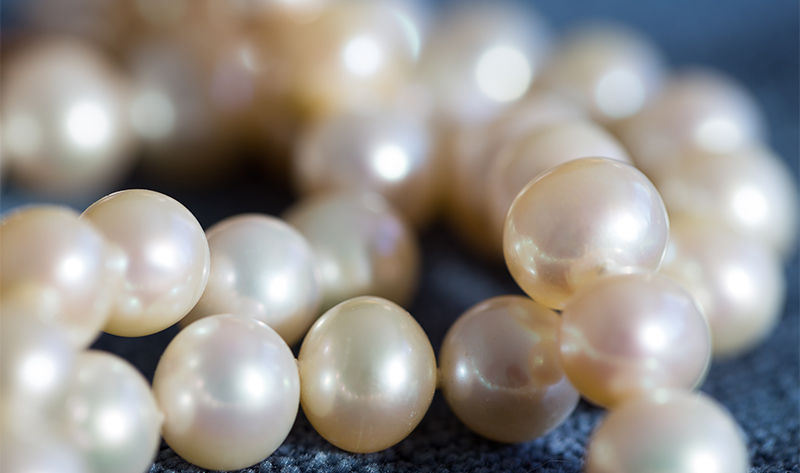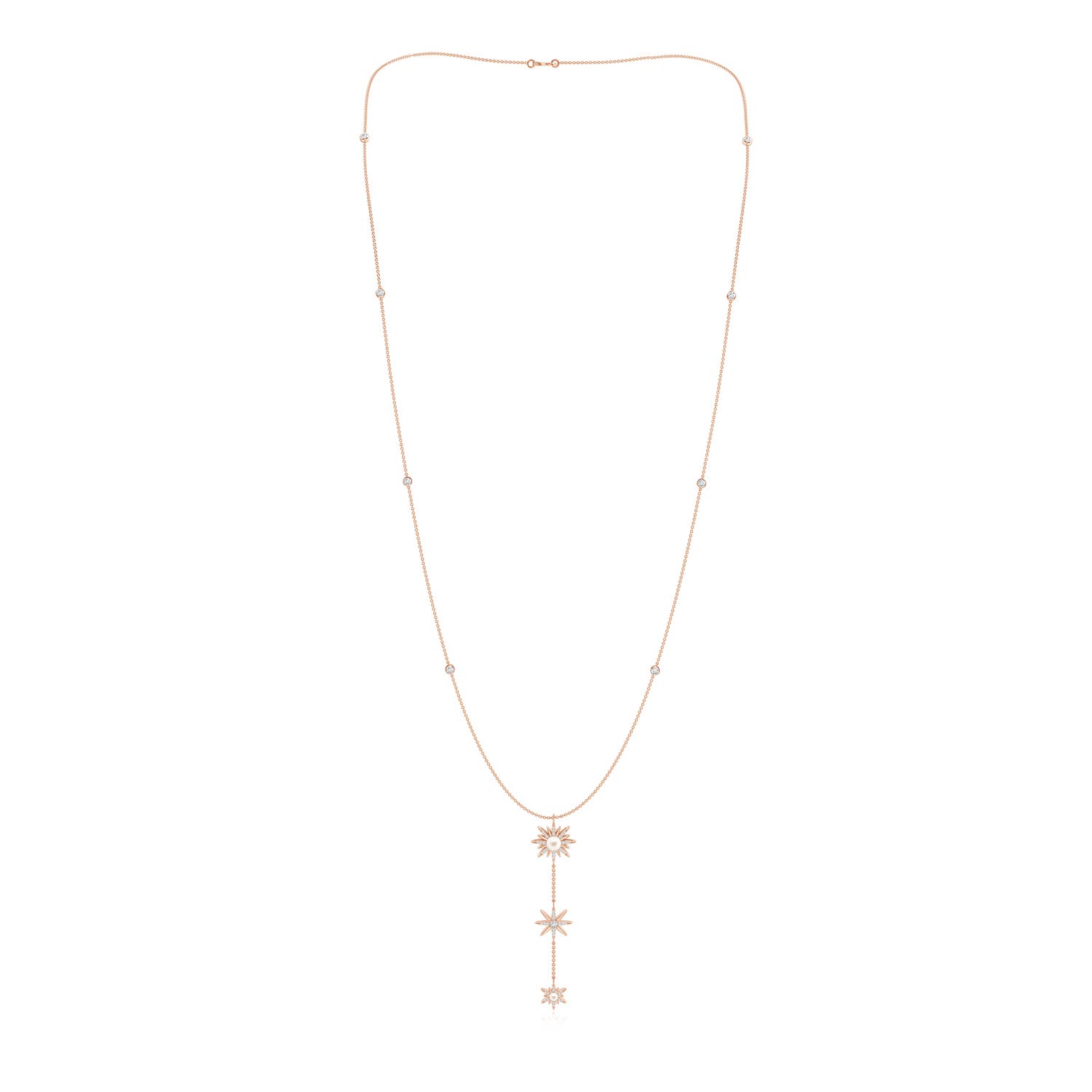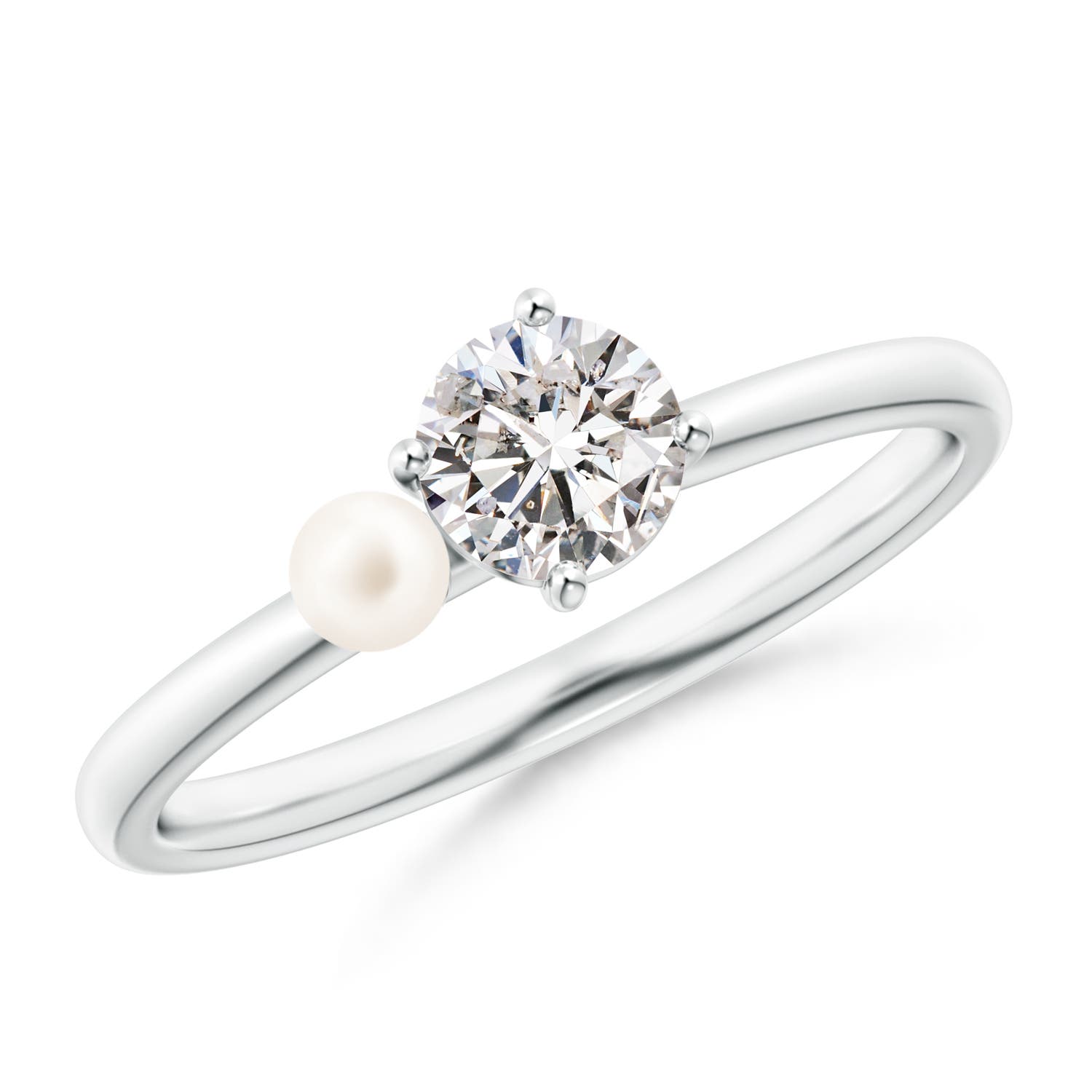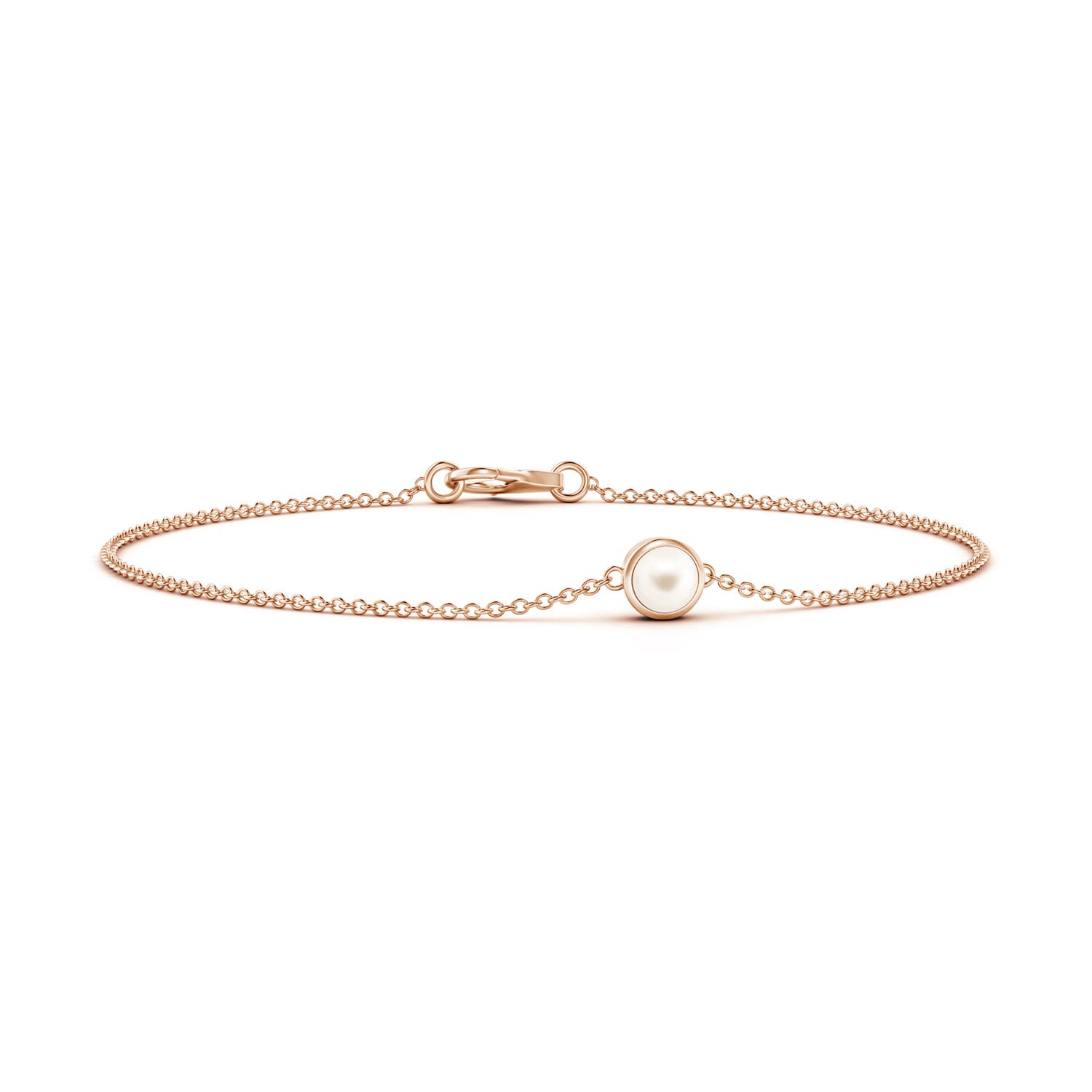Interested to know about the different types of freshwater cultured pearls? Well, you’re in the right place! Freshwater pearls are commercially produced in China by the bivalve mussels Hyriopsis cumingi (triangle shell) and Hyriopsis schlegeli (Biwa shell), as well as in Japan (Biwa pearls and Lake Kasumigaura pearls) and the United States (Mississippi River Basin). These species can produce fine quality pearls than the C. Plicata variety, which was commonly used in the 1980s. The method of extracting pearls from them is known as “nucleation.” It entails surgically implanting many tiny pieces of mantle tissue within the mussel. This results in the formation of a sac and the secretion of nacre around it. Nacre, popularly known as mother-of-pearl, is a calcium carbonate organic compound. Mollusks release this material in reaction to an intruding irritant or implanted mantle tissue. Forming layers of nacre on tissue typically takes 2 to 7 years and it yields more than a dozen pearls in the end. Natural pearls have been collected and harvested for over 4,000 years, and today, China produces the majority of freshwater pearls.
What Are Freshwater Cultured Pearl Gemstones?
The freshwater cultured pearl is also known as the Kasumiga pearl. It can be formed or shaped within pearl mussels. Furthermore, each pearl mussel is capable of creating 50 pearl stones. Despite their ability to create a massive quantity of pearl stone, it is not widely available in the market due to its potato-like shape. Thanks to technological advancements and the ongoing efforts of gemologists, modern freshwater pearl stones have been added to the array of high-quality pearl stones. Therefore, the freshwater pearl is more similar to natural pearl stone. Freshwater pearl stones come in a remarkable range of sizes, shapes, and colors, including blue, pink, peach, and purple. This pearl also comes in the form of grey gemstones.
Different Varieties
Types of freshwater cultured pearl can be specified into two categories-
1. Keshi Pearl- Keshi pearls are a product of pearl cultivation. Although saltwater oysters may reject their bead implant, particles of the surrounding mantle tissue remain and induce the formation of nacre in flat, petal-like structures. They are frequently extracted as seed pearls, giving rise to their name, which translates as “poppy seed” in Japanese. While some believe they are natural pearls, they are a by-product of the culturing process. One of the most striking features of south sea Keshi pearls is their extreme brightness and iridescence, which can rival that of the finest farmed pearls.
2. Seed Pearl- Seed pearls are tiny, spherical, natural pearls that are less than two millimeters in size. They are uncommon nowadays but can be found in antique jewelry or sewn into vintage garments. Freshwater and saltwater mollusks can both generate seed pearls.
Important Aspects About Freshwater Cultured Pearls
Unlike most other gemstones found in the earth’s crust, the pearl is an organic jewel generated by living beings. As a result, the grading metrics used to measure its quality differ slightly. Six essential aspects must be considered while looking for a high-quality freshwater pearl.
- Luster– This determines the ability of a gem to reflect light. In the case of a high-quality freshwater pearl, the shine is bright and crisp. Conversely, pearls that appear chalky, milky or dull should be avoided because they suggest poor quality.
- Surface– A transparent cover is an essential characteristic of a high-quality freshwater pearl. Any lump, crack or disfiguring area will instantly reduce its value. Therefore, always search for a surface that is smooth and mirror-like.
- Color- Freshwater pearls come in various natural pastel colors, including lavender, pink, and everything in between. However, white is unquestionably one of the most popular colors. An heirloom-quality freshwater pearl in this color typically has a slight creamy overtone.
- Shape– Freshwater pearls are typically round or slightly off-around in shape. Because it is difficult to find one that is exactly round, they will command a higher price than the rest.
- Nacre Thickness– The nacre on the best freshwater pearls is extremely dense. This is the material used to create pearls; its depth impacts the pearl’s brilliance, longevity, value, and quality.
- Size– In this case, the value of the pearl will increase with its size. Therefore, a single-millimeter increase will result in a significant increase in value and overall attractiveness. Freshwater pearls range in size from 6.5 mm to 7.0 mm. Akoya pearls in the 7mm to 8mm size range are the most popular because they are adaptable enough to be utilized in various jewelry styles such as earrings, bracelets, and necklaces.
There is currently no globally acknowledged method for evaluating pearl quality.
However, the characteristics listed below will assist you in distinguishing a high-quality freshwater pearl from the others.
- Best (AAA)- These high-grade pearls are nearly spherical and have minimal imperfections.
- Better (A.A.)- They are off-round in shape and feature minor to significant flaws. Compared to high-quality pearls, their luster is more or less average.
How Valuable Is Freshwater Cultured Pearl Gemstone?
Initially, freshwater pearls were thought to be of low quality and an affordable alternative to ocean pearls. This is partly because freshwater pearls had and continue to have a wide range of hues and shapes compared to all other types. However, in 1990, a new class of freshwater pearls was brought to the market. These were more spherical and lustrous than the ‘rice crispy-shaped’ freshwater pearls of the 1980s.
The modest freshwater pearl has evolved through several stages over the previous decade. The formed ‘rice-grain,’ off-round ‘potato,’ and ‘button’ shapes have given way to colossal, near-perfect round freshwater pearls with exceptional brilliance. A high-quality pearl nowadays may easily compete with Akoya pearls in terms of beauty and value.
Benefits
There are multiple freshwater cultured pearl benefits
- It brings emotional balance to a stressed mind.
- It controls your anger, cures insomnia, and calms your nerves.
- It removes the adverse effects of the moon in your horoscope and strengthens your thinking.
- Boosts self-esteem and generates positive energy
- Strengthens the relationship between a husband and wife.
- Pearls are symbols of affluence and are said to bring good fortune.
- Pearl’s inner radiance (orient) is said to tap inner wisdom and nourish love.
- Pearls are often thought to represent innocence and faith.
- Practitioners use pearls to improve personal integrity, bring the truth forward, increase sincerity, discourage immodest behavior and enhance wisdom.
- Natural pearls contain pharmaceutical calcium and natural luminosity and are still crushed and utilized in medicinal and aesthetic therapies.
- They are supposed to help with bloating, increase fertility and ease labor pain.
Taking Care of Freshwater Cultured Pearls
Freshwater pearls are soft and delicate gemstones that require special love & care. Keep the following tips in mind on how to take care of freshwater cultured pearl bracelets to keep them looking fresh and new for years to come:
- Chemicals in perfumes, cosmetics, hairsprays, and washing products which contain citrus oils or even mild acids, can quickly destroy pearls. It is therefore best to put on freshwater cultured pearl jewelry after using any of the above-mentioned products.
- Keep your pearls apart and away from dirt and dust.
- Avoid putting your pearl jewelry in plastic bags and containers since they produce chemicals that cause the pearls to decay.
- Keep your pearls away from direct sunlight, heat, and hot surfaces like a fireplace mantle, television, or stove.
- To avoid tangles and scratches, store your jewelry in a soft silk or velvet bag first, then in a partitioned jewelry box. You do not need to keep your pearls in a dry room or a safe deposit box.
- Pearls, like our skin, require moisture to rehydrate and must be removed from time to time. This enhances their shine and luster.
- Before wearing a knotted cord, make sure it is entirely dry.
- One of the best things for pearls is human skin oils.
- Always take off your pearls before exercising, as sweat might damage the surface.
- Inspect the setting and strings of your pearl bracelets regularly and have any damage repaired at a jewelry store as soon as possible.
- It is best to wear your pearl bracelets occasionally and not every day.
Tips on Cleaning Freshwater Cultured Pearls
Following are the tips you need to follow if you would like to know how to clean freshwater cultured pearl bracelets:
- Do not soak pearls in water.
- After each wear, clean the pearls with a soft, dry cloth and allow them to dry naturally.
- Toothbrushes and other abrasive materials will damage your pearls. Any commercial cleaning chemical, including those labeled as gentle, will do the same.
- Use mild soap and water to clean pearls; avoid using detergents and powdered cleaners, baking soda, chlorine bleach, vinegar, tarnish remover, any form of jewelry cleaner, or ammonia (even Windex).
- Do not clean your pearls with steam or ultrasonic cleaners.
- Water does not affect the color or shine of pearls. After using your pearls, moisten a delicate cloth with water and wipe them clean.
- To restore the damage caused by accidental spills, soak your pearls in lukewarm water with gentle natural soap. Rinse well and dry with a cotton cloth.
Conclusion
Whether you are in search of the perfect freshwater cultured pearl ring or whether you are keen to own a piece of jewelry with these stunning pearls for healing purposes, the options are endless. At Angara, you will find stunning options in the form of rings, bracelets, earrings, and pendants, so don’t hold back and explore now!
Also Read
- Different Types And Colors Of Onyx
- Different Types of Akoya Pearl
- Different Types of Amethyst
- Different Types of Aquamarine
- Different Types of Black Onyx
- Different Types of Black Opal
- Different Types of Blue Sapphire
- Different Types of Blue Zircon
- Different Types of Citrine
- Different Types of Coffee Diamond
- Different Types of Diamond
- Different Types of Earring Back
- Different Types of Emerald
- Different Types of Black Diamond
- Different Types of Golden South Sea Pearl
- Different Types of Green Sapphire
- Different Types of Kyanite
- Different Types of Moissanite
- Different Types of Moonstone
- Different Types of Orange Sapphire
- Different Types of Peridot
- Different Types of Pink Tourmaline
- Different Types of Rainbow Moonstone
- Different Types of Rose Quartz
- Different Types of Rubelite
- Different Types of Ruby
- Different Types of Sapphire & Their Colors
- Different Types of Tahitian Pearl
- Different Types of Tanzanite
- Different Types of Teal Montana Sapphire
- Different Types of Tourmaline
- Different Types of Tsavorite
- Different Types of Turquoise
- Different Types of Yellow Sapphire
- Different Types & Colors of of Topaz
- Different Types of Garnet
- Different Types of Opal
- Different Types of Pearls
- Which Emerald is Best in Quality?
FAQ
Angara uses Keshi and Seed, both types of freshwater cultured pearl, for jewelry making.
Keshi freshwater cultured pearls are good for jewelry.
































